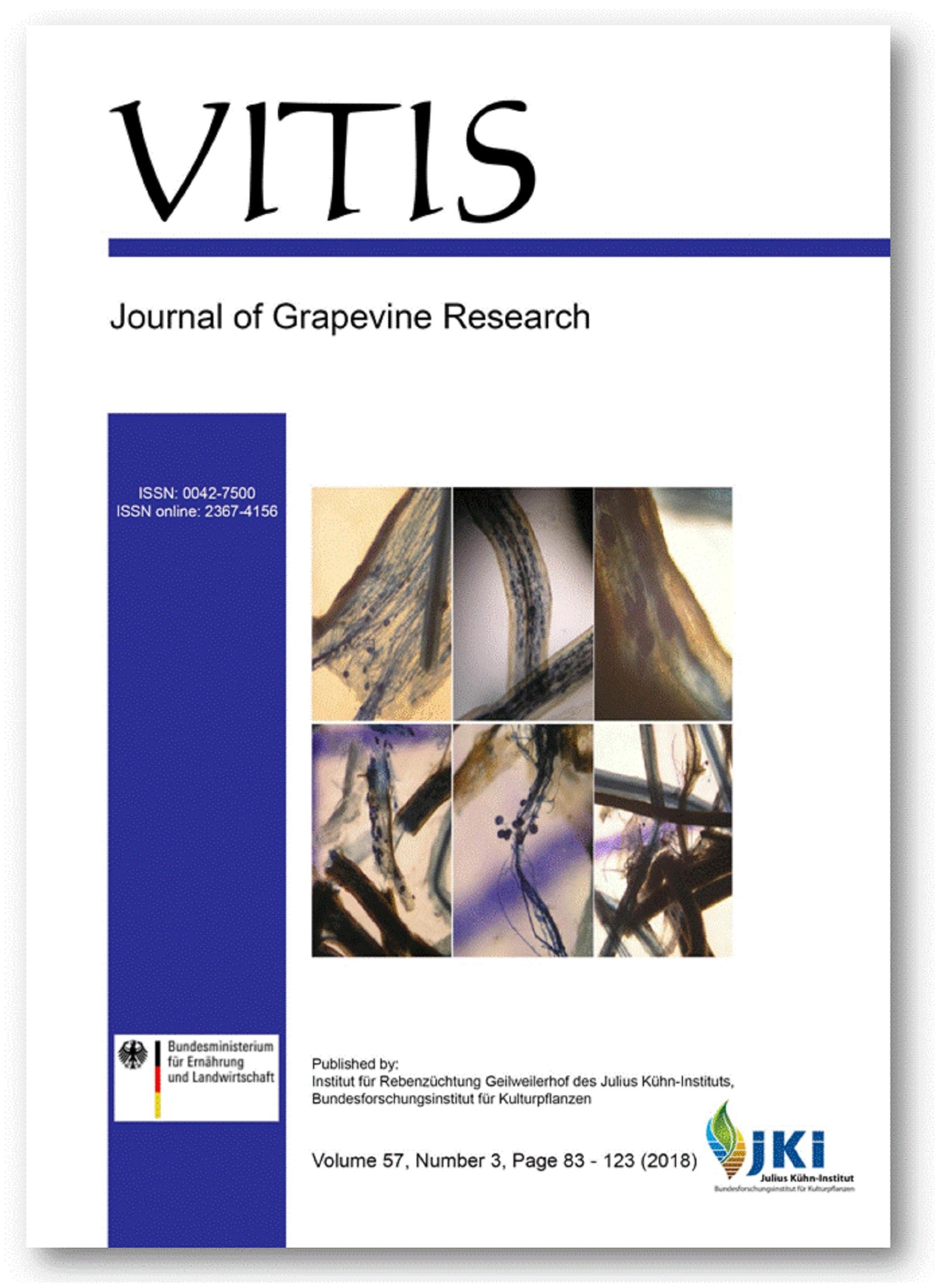Spur pruning leads to distinctly different phenolic profiles of base sparkling wines than cane pruning
DOI:
https://doi.org/10.5073/vitis.2018.57.103-109Keywords:
Vitis vinifera; pruning; sparkling wine quality; yield; carbohydrates.Abstract
Winter pruning is the principal method for regulating yield in viticulture. The aim of this work was to investigate the effectiveness of cane and spur pruning on yield, and on grape and wine composition. Cane and spur pruning were investigated in Vitis vinifera L. 'Pinot noir' and 'Chardonnay' vertically-shoot-positioned vines over three seasons. Effects on vine carbohydrates, yield components, leaf area, grape and base wine composition were determined. The canopies of spur pruned vines established more rapidly than cane pruned vines in the 2009/10 season, for both 'Pinot noir' and 'Chardonnay'. The canopies were denser under spur pruning than cane pruning. Pruning treatment had no effect on total yield for either cultivar in any of the three seasons. Total soluble solids (TSS) and titratable acidity were unaffected by pruning treatment, except in 2012 where TSS and pH were higher for spur pruned 'Chardonnay' vines. Apart from spur pruned 'Pinot noir' vine wood being higher in starch in the winter of 2011, overwintering starch and soluble sugar concentrations were not different between pruning treatments for 'Pinot noir' and 'Chardonnay'. Although not different in yield or basic fruit composition, fruit from spur pruned vines resulted in distinctly different phenolic profiles of base wines, with cane pruning appearing to negatively impact on the low molecular weight phenolics in the wine. The results presented here provide confidence that quality is not lessened, in fact could be improved, by shifting from the industry norm of cane to spur pruning for sparkling wine production in cool climates.
Downloads
Published
Issue
Section
License
The content of VITIS is published under a Creative Commons Attribution 4.0 license. Any user is free to share and adapt (remix, transform, build upon) the content as long as the original publication is attributed (authors, title, year, journal, issue, pages) and any changes to the original are clearly labeled. We do not prohibit or charge a fee for reuse of published content. The use of general descriptive names, trade names, trademarks, and so forth in any publication herein, even if not specifically indicated, does not imply that these names are not protected by the relevant laws and regulations. The submitting author agrees to these terms on behalf of all co-authors when submitting a manuscript. Please be aware that this license cannot be revoked. All authors retain the copyright on their work and are able to enter into separate, additional contractual arrangements.



